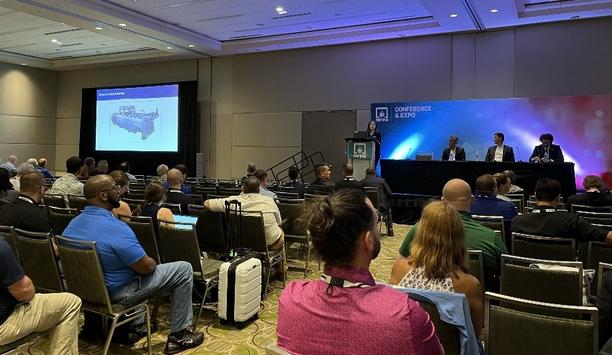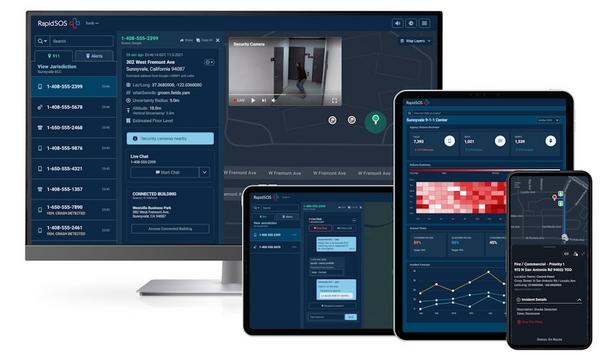Given the large global consumption of hydrocarbon fuels across all sectors, the associated risks are constantly expanding. The Allianz Global Corporate Specialty study cites fire and explosion as the largest causes for loss claims filed globally from 2013 - 2018.
Fire and explosion
Furthermore, fire and explosion are among the top 10 global business risks in 2021. More than 100 major fuel explosions have been reported, since 2019 around the world, most of which were avoidable.
The risks are driving an expanding market for fuel explosion prevention systems, although the warning and mitigation solutions previously available in the market offer limited respite. An innovation is the ATOM Explosion Prevention System, by ATOM Alloys, headquartered in Dubai, UAE.
ATOM Explosion Prevention System
The technology is compliant to NFPA 69 standards and is tested and certified by international agencies
The system works with a passive protection module inside fuel containers that does not allow any deflagration to escalate into an explosion. By containing the fire, the system actively prevents loss, reduces disaster risk and gives mitigation systems more time to work better.
The technology is compliant to NFPA 69 standards and is tested and certified by international agencies. A range of products has been developed to suit contemporary industry requirements, helping to upgrade to higher standards of explosion safety and to enable efficient transfer and storage of fuels.
“At the heart of most fuel explosions sits an unprotected fuel container,” said Ajit Tharoor, the Chief Executive Officer (CEO) of ATOM Alloys, adding “The first fuel tank explosion triggers additional explosions in fuel tanks within the vicinity, thereby multiplying the effect. Our disruptive technological innovation addresses the safety of that unprotected fuel container.”
Passive protection module for fuel containers
By equipping every fuel container with a passive protection module that is explosion resistant, the technology makes liquid fuel storage and transport tanks explosion resistant.
By resisting explosion, ATOM shifts the safety steps from mitigation to hazard prevention. It has multiple product applications, from a jerry can to fuel tankers to bulk storage, which create an ecosystem of safety.
Technological innovation to protect workplace and residences
“The technological innovation can protect every workplace and residence that uses fuel, from hospitals and malls to schools and industrial complexes, and convert them into zones safe from fuel tank explosion,” said Ajit Tharoor.
He adds, “Any explosion wreaks damage and destruction on the business, the community and the environment, but fuel tank explosions can be prevented. For us, it is our purpose, to bring top level explosion safety to everyone who uses fuel.”
For firefighters, an explosion prevention system complements their mission and adds another layer of safety, by providing specific advantages, such as:
- Explosions have a ‘domino effect’ and such incidents generate immense pressure on the firefighting force, in terms of response time, resources and manpower. Resisting explosions without any human intervention can reduce such pressures on the forces and contain the level of damage.
- At a practical level, in the event of a fire, a protected fuel tank can be accessed easily by firefighters for extinguishing the fire and even decanting fuel from the tank.
- The explosion prevention system enables industries and communities to equip and take more responsibility themselves, in the prevention of disaster incidents, thus helping firefighting forces to optimize their efforts and work better.
- Once an explosion is prevented, the safety risks faced by a firefighter are far less, when compared to when they have to handle an explosion, and there is more time to handle fire mitigation interventions.
- An explosion-resistant retrofit can protect fuel tanks of vehicles that move in explosion hazard spaces. This could be particularly useful for fire vehicles.
Innovation in materials science and fire dynamics
The technology draws on innovation in materials science, design engineering and fire dynamics. A passive protection module works on the three principles of thermal conductance, flame quenching and structured packing.
Made from the intervolving of a reticulated alloy mesh, the patented module works by its passive physical presence in the Deflagration to Detonation Transition (DDT) stage.
 |
| The ATOM Explosion Prevention System works towards preventing an explosion from happening |
Fire protection and mitigation systems
Unlike the mitigation systems that work after an incident, the ATOM Explosion Prevention System works towards preventing an explosion from happening. It is also different from warning systems, as it works without the requirement of any triggering sensors, chemical reaction or human intervention.
While fire protection and mitigation systems have been developed in recent years that address explosions mostly in controlled environments, the tested, proven and certified solution provides a range system of explosion prevention solutions for liquid fuel storage, at industrial scale with cost effectiveness. Additional features of durability, slosh resistance and industrial customization have been incorporated.
Specialized sector-based solutions
ATOM can be applied at a ready-made product level or as customized process-based integration to existing systems
Specialized sector-based solutions have been developed. Essential service providers – data centers, schools, hospitals, hotels, civil defense organizations, etc. are today required to maintain a high level of energy resilience (fuel storage) to avoid service disruption and business interruptions. Such fuel storages are high risk with great volumes of fuel.
ATOM can be applied at a ready-made product level or as customized process-based integration to existing systems. Some examples are fuel tankers for the oil and gas industry, mobile fullers for the fuel delivery business, marine fuel tanks for the maritime industry and storage tanks for industrial and civil uses.
The defense industry is one of the highest consumers of fuel, and it is required to maintain energy resilience banks as well as store and deliver fuel to militarized/border territories. This places huge demands on supplementary storage and transportation of flammable fuels.
Explosion risks faced by defense sector
The explosion risks faced by the defense sector are also the highest due to their operations in conflict zones, the presence of highly explosive ammunition in their spaces, and the threats of war, sabotage, and vandalism. Dedicated products for the defense sector include jerry cans, skids, mobile containers, barrels, smart fuel stations, marine fuel tanks and underground built tanks, among others.
The explosion prevention system has been granted the Explosion Resistant verification mark by the Underwriters Laboratory. Following successful trials for military application, ATOM has been awarded four patents from the U.S. Patent and Trademark Office and is registered in PCT countries (most major industrial countries).
Explosion prevention system
The system has been tested by the Southwest Research Institute, USA and certified by the VCA Dangerous Goods Office, UK
The system has been tested by the Southwest Research Institute, USA and certified by the VCA Dangerous Goods Office, UK, Underwriters Laboratories, USA, Bureau Veritas, France, and Emirates Industrial Lab, UAE. It is compliant with NFPA 69, Chapter 14, 2014; ASTM F3429/ F3429 M20; United Nations Rec. on Transfer of Dangerous Goods, Ch. 6.1; IMDG Code and ICAO Technical Instructions.
The system has also been registered with WIPO and is in the PCT Registration, Foreign National phase, and the company is a member of the National Propane Gas Association.
Asset protection
“Every explosion generates damaging effects on the environment in addition to business interruption and losses. The adoption of an explosion prevention system helps organizations and governments fulfill their commitments towards environmental protection, climate change and safety,” said Ajit Tharoor.
He adds, “The presence of the system reduces fuel evaporation loss, thereby reducing emission/air pollution. Further, ATOM helps businesses protect their assets, workplace, staff from risks and losses and reduces disaster risk for communities and the environment.”








































